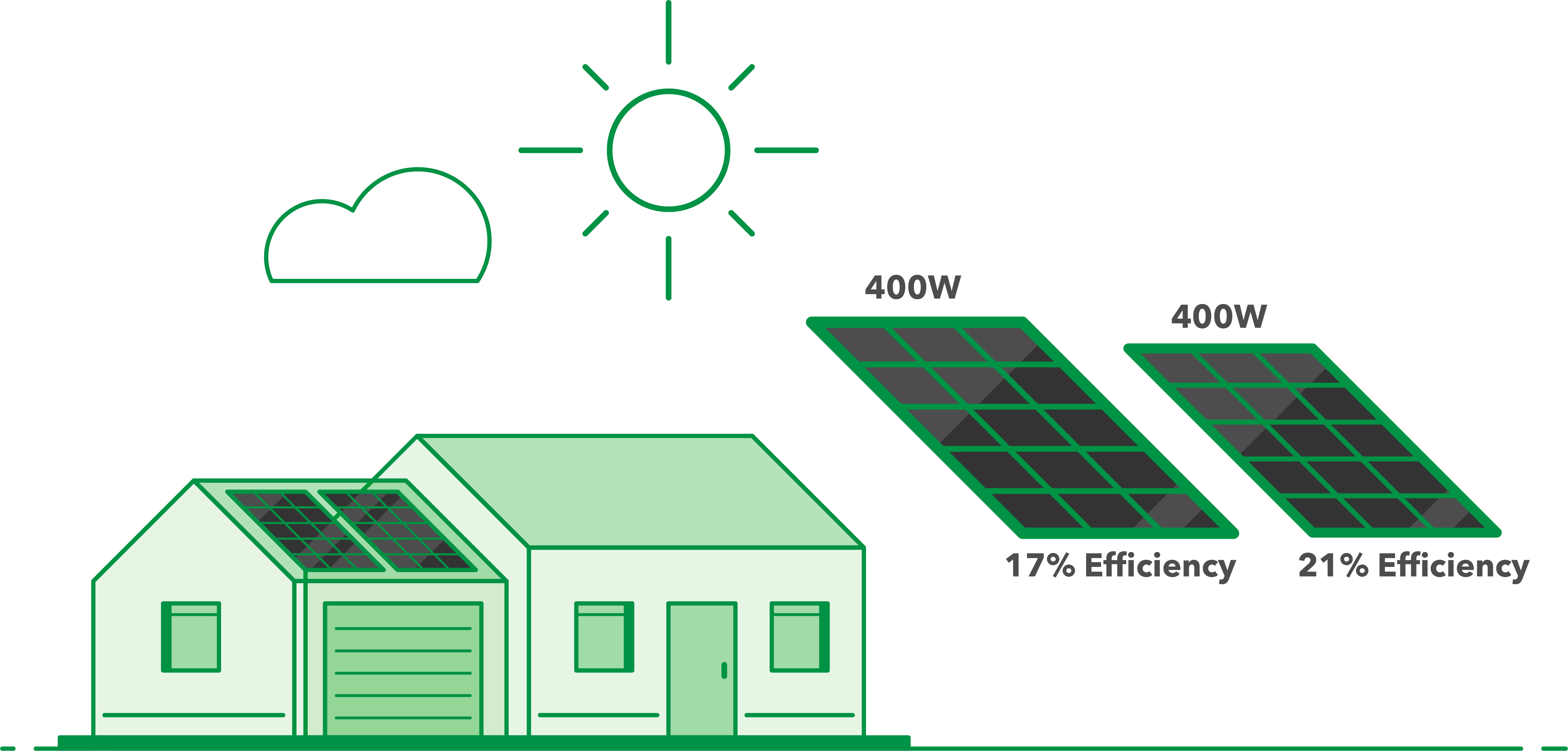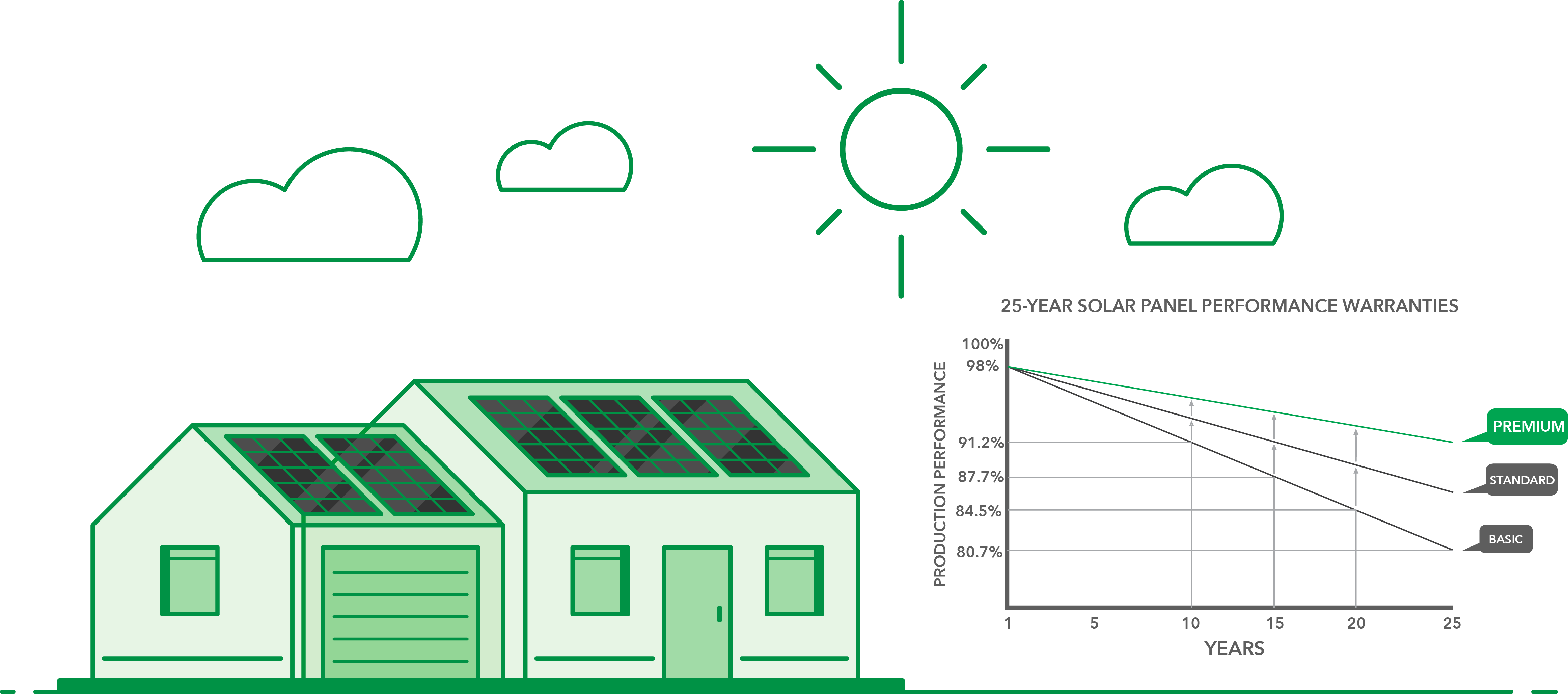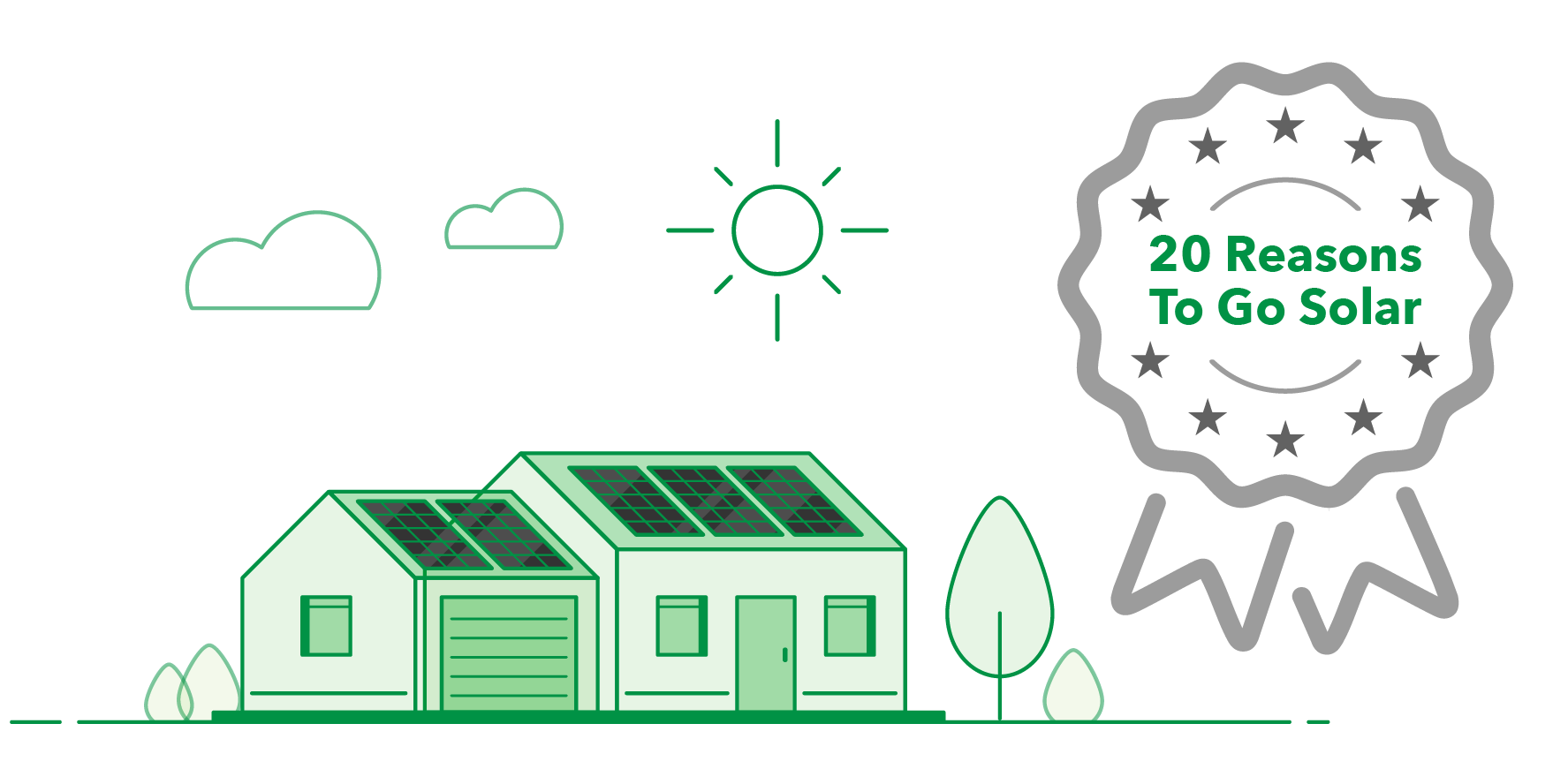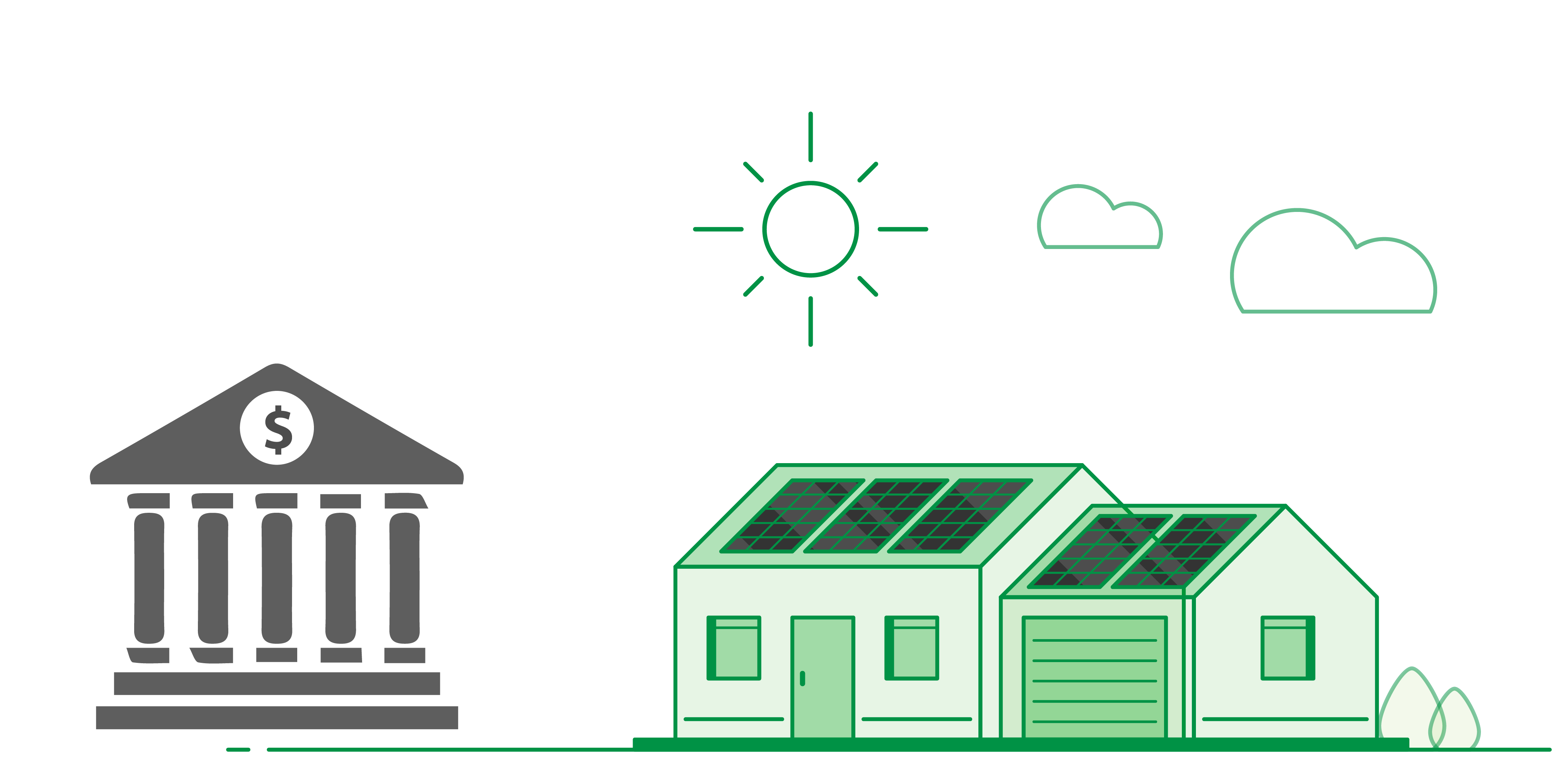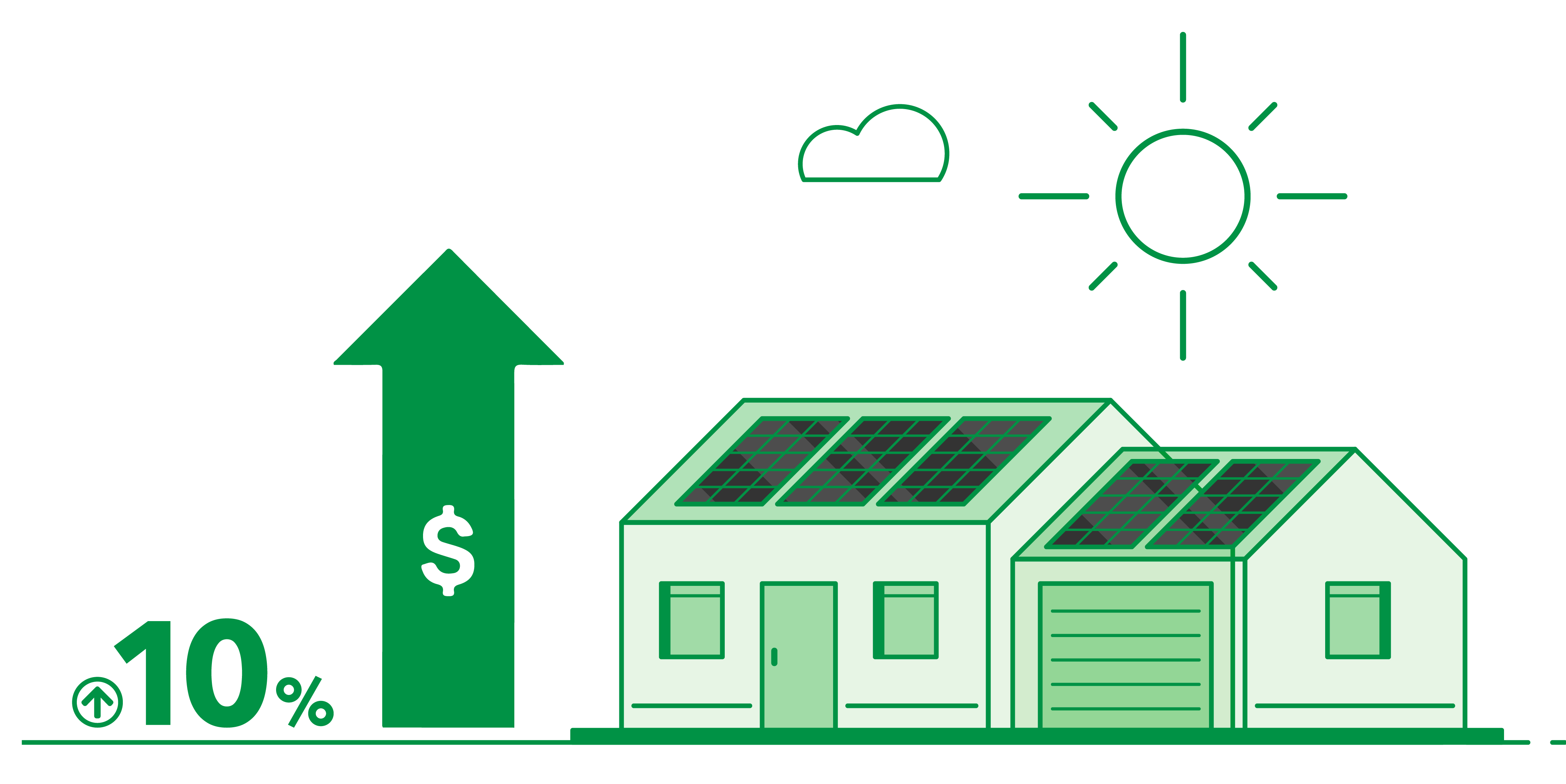How Solar Works
Introduction
There’s a reason why millions of homeowners and counting have already installed solar - it’s a great investment! Solar panel systems last for 25 years or more, offsetting most or all of your electricity bill every month. Those monthly savings can add up quickly. For example, if you spend $200 per month on electricity today, you’ll spend over $90,000 on electricity in the next 25 years if utility rates continue to increase on average by 3.5% each year. By investing in solar, you can avoid most, if not all, future electricity expenses. But other than the investment making sense, how does solar actually work? Here’s a quick guide to help you understand the basics.
How Solar Works
- Your solar panels convert sunlight into DC electricity
- The DC electricity is fed into an inverter that converts it into AC electricity that your home can use
- Your home consumes the electricity it needs
- Surplus electricity is fed back into your utility grid
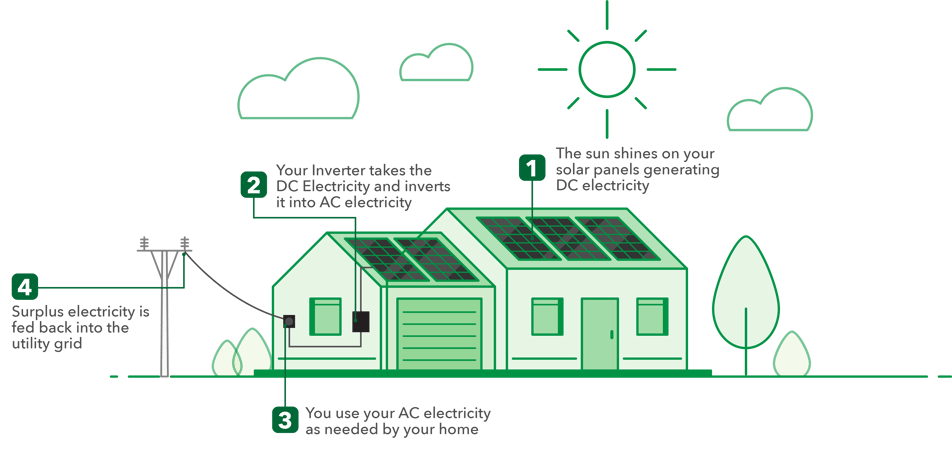
How Solar Works With Your Utility Company
Going solar in most cases will include tieing your system in with the utility grid. There are many advantages to grid-tied systems. Your utility company will offer one of two programs: net metering or parallel generation. Learn about these two types of utility interconnection below.
Net Metering (NEM)
Your solar panels will produce power only when the sun is shining. For this reason, you will still need to be connected to your utility grid. This is so you can take advantage of Net Metering to maximize the value of your system. Net metering is a billing mechanism that credits solar energy system owners for the electricity they add to the grid. For example, if a residential customer has a solar system on their roof, it may generate more electricity than the home uses during daylight hours. If the home is net-metered, the electricity meter will run backward to provide a credit against what electricity is consumed at night, or during other periods when the home's electricity use exceeds the system's output. Customers are only billed for their "net" energy use. This is the most beneficial program for solar and is often mandated at a state level. However, some utilities have restrictions so you will always want to ask for a copy of your utility's net metering policy.

Parallel Generation
With parallel generation, the billing mechanism is different from net metering. With parallel generation, the energy that you deliver to the grid will not offset the energy that you need from the grid on a 1:1 scale. In this scenario, the energy that you may produce in excess of what you consume during daylight hours is purchased from your utility at a set amount per kWh. The electricity that you will need from the grid continues to be measured and you pay your normal retail rate. In most cases, the set amount your utility company will pay you for your energy will be less than the retail rate. For this reason, parallel generation is not as advantageous as net metering but does still benefit solar owners in unique situations.

Key Components Of A Solar Panel System
Solar Panels
Solar panels are the main component of a solar system and are responsible for generating electricity from sunlight. There are many types of panels available in the residential and commercial markets. A solar panel ranges in type, size, color, and wattage. Most residential panels are now black with black anodized aluminum frames designed to be aesthetically pleasing for your home’s roof.
Four main performance measures used to compare solar panels
- Wattage - This is how a panel is rated from the factory in wattage
- Efficiency - This is a measure of how well the panel absorbs sunlight
- Degradation - This measures the drop in a panel performance each year
- Warranty - It's very important that your panels come with great warranties
Solar Panel Wattage
Solar panel wattage represents a solar panel's theoretical power production under ideal sunlight and temperature conditions. As a final step in manufacturing a solar panel, manufacturers will flash a solar panel with light in factory-controlled conditions, then measure the number of watts the panel is capable of producing. This reading is what the panels are then rated. Most residential solar panels have power output ratings from 300 to 450 watts, depending on panel size and how well they convert sunlight into energy. While higher power ratings are considered preferable, power output is not the sole factor in judging a solar panel’s performance and is often misunderstood. To explain why wattage may not be the sole factor in your solar panel selection let's consider the following example. Say you need a 1.2KW system, you could use three 400-watt panels. However, it's also possible to use four 300-watt panels to create the same 1.2KW system. Although you are using two completely different wattage panels, you end up with the same solar system size and overall power output rating.
Solar Panel Efficiency
Not all of the sunlight that reaches a solar panel is converted into electricity. In fact, most of it is lost. This is where a solar panel’s efficiency rating comes into play. A solar panel’s efficiency rating is the percentage of solar energy shining on the panel that is converted into usable electricity. Multiple manufacturing factors play a role in a panel's efficiency, and most brands you will come across will have efficiency ratings between 17% and 22%. While you may think higher efficiency ratings are better, sometimes efficiency ratings don't matter all that much. To explain why, let's take two panels that are rated the exact same wattage, but have different efficiency ratings. One panel has a higher efficiency rating and the other has a lower rating. Since the higher-rated panel converts more sunlight to energy, it’s likely this panel will be smaller in physical size than the lower-rated panel. Both panels will produce the same amount of power. However, if you have limited roof space, the higher efficiency panels will allow you to produce more power. If you have more than enough available space for solar panels, then maybe the efficiency of the panel doesn't matter as much to you. Like wattage, efficiency is just one aspect to take into consideration when choosing which solar panel is best for you.
Solar Panel Degradation
Although solar panels are designed to soak up sunlight, over time the sun takes its toll, and the material inside your panels will produce less and less electricity. This loss in power production is referred to as degradation and the rate a panel degrades each year is a degradation rating. Although it is not ideal for your panels to degrade, most panel manufacturers have very low degradation ratings and your panels will still be producing energy decades into the future.
Solar Panel Warranties
Solar panel warranties protect your solar investment and are an important factor in considering what panels are right for you. There are a few different kinds of warranties that manufacturers of panels offer and understanding the differences between them is important to make sure your solar panels are covered for years to come. The two primary warranties offered will be performance and product warranties. In addition, some manufacturers will also include labor warranties which will cover any service expense that arises from a service call.
Solar Panel Performance Warranties
A solar panel performance warranty is a guarantee of the solar panel's production year after year. This is based on the panel's degradation rating. Typically a solar panel will come with a 25-year performance warranty that guarantees the solar panel will produce at 80% after 25 years in use. The higher the guarantee the better. Some top-tier manufacturers, like the ones we provide, offer performance warranties as high as 85% after 25 years. Our Silfab panels even extend their performance warranty to 30-years so you can have a piece of mind that your panels will produce power long after you recoup your investment.
Solar Panel Product Warranties
A solar panel’s product warranty covers the integrity of the panel itself and protects you against problems such as manufacturing defects, or premature wear and tear. Most solar panels will come with a 10-25 year product warranty. Generally, the longest warranty possible is best, as it is a good indicator that the manufacturer you are going with really stands behind their product.
An important note here is no manufacturer warranty will cover physical damage resulting from hail or a powerful storm. This sort of coverage will normally need to come from your property insurance policy.
Solar Inverters
Although Solar panels are probably the most recognized component of a solar panel system, you would not be able to use the energy they produce in your home or building without a solar inverter. Once you understand how solar inverters work and the different types of inverters available to you, you will have the knowledge to select and invest in the right inverter for your solar energy project.
How Do Solar Inverters Work?
A solar inverter inverts the energy output from solar panels into a usable electricity form to be utilized in your home or building. Solar panels produce DC electricity and an inverter inverts this DC electricity into usable AC electricity for your home.
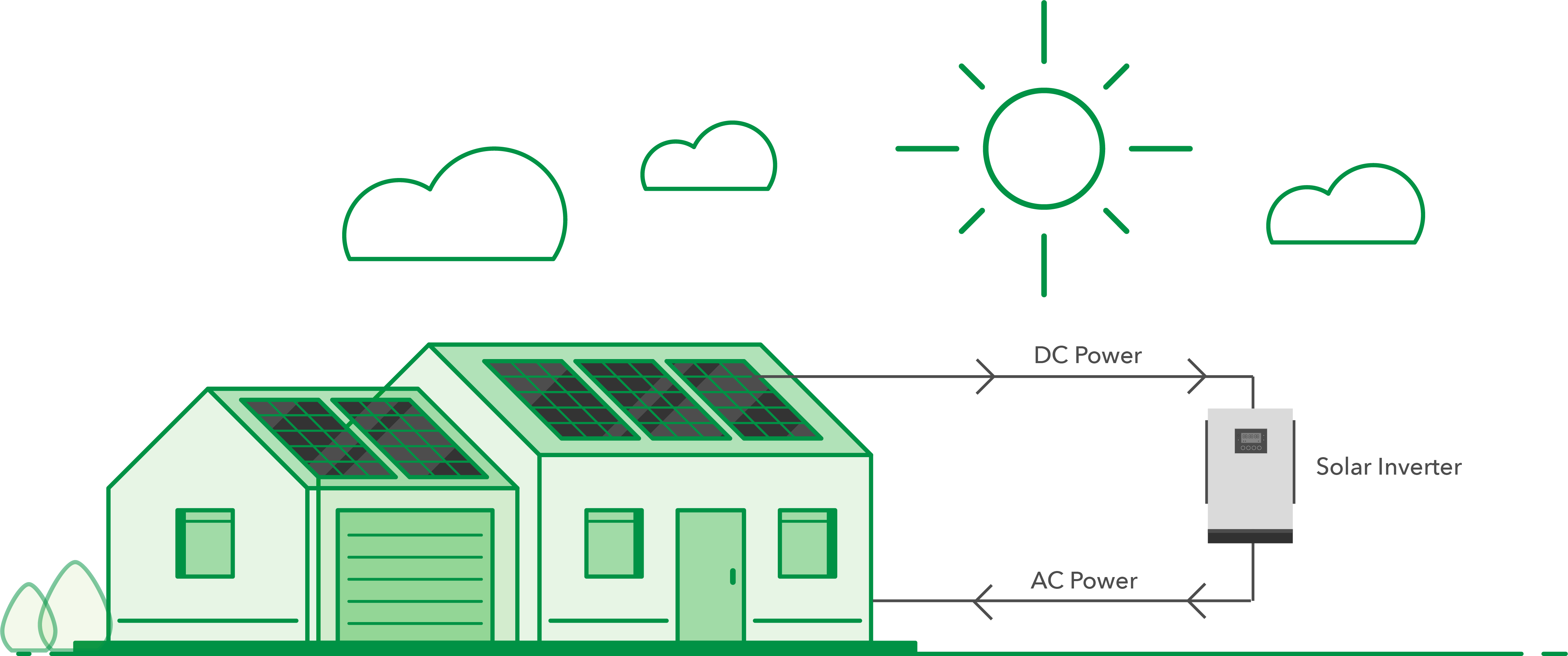
Types Of Solar Inverters
All solar inverters accomplish the same task of inverting DC electricity into AC electricity. However, there are several different types of solar inverters available to you. Each of the three types we will cover below function slightly differently and have unique pros and cons.
String Inverters
Commonly thought of as a standard option, a string inverter is a simplistic central inverter that takes the combined DC power from a string of panels and inverts it to AC electricity. Say you have an array of 20 solar panels on your roof. With a string inverter, all of your panels will be wired together and the total electricity they produce will be fed to a central string inverter normally mounted to an exterior or interior wall of your home or building. The string inverter does its job, inverts the DC electricity to AC electricity, and then feeds this usable power into your existing electrical system.
- Pros: String Inverters are the lowest cost solution, and are pretty easy to maintain as you can access them easily.
- Cons: A reduction in the performance of one solar panel from shading or other impediments can impact the output of all the panels wired together in a string. Think of a string of Christmas lights. If one light goes out all other lights on that string are affected. Same concept here with String inverters. Also, inverting all your power in one place leaves a single point of failure for the entire system. If your string inverter goes down, then you will not be producing power.
- Best Applications: Solar Panel systems that receive consistent sunlight throughout the day or owners looking for lower-cost solar systems
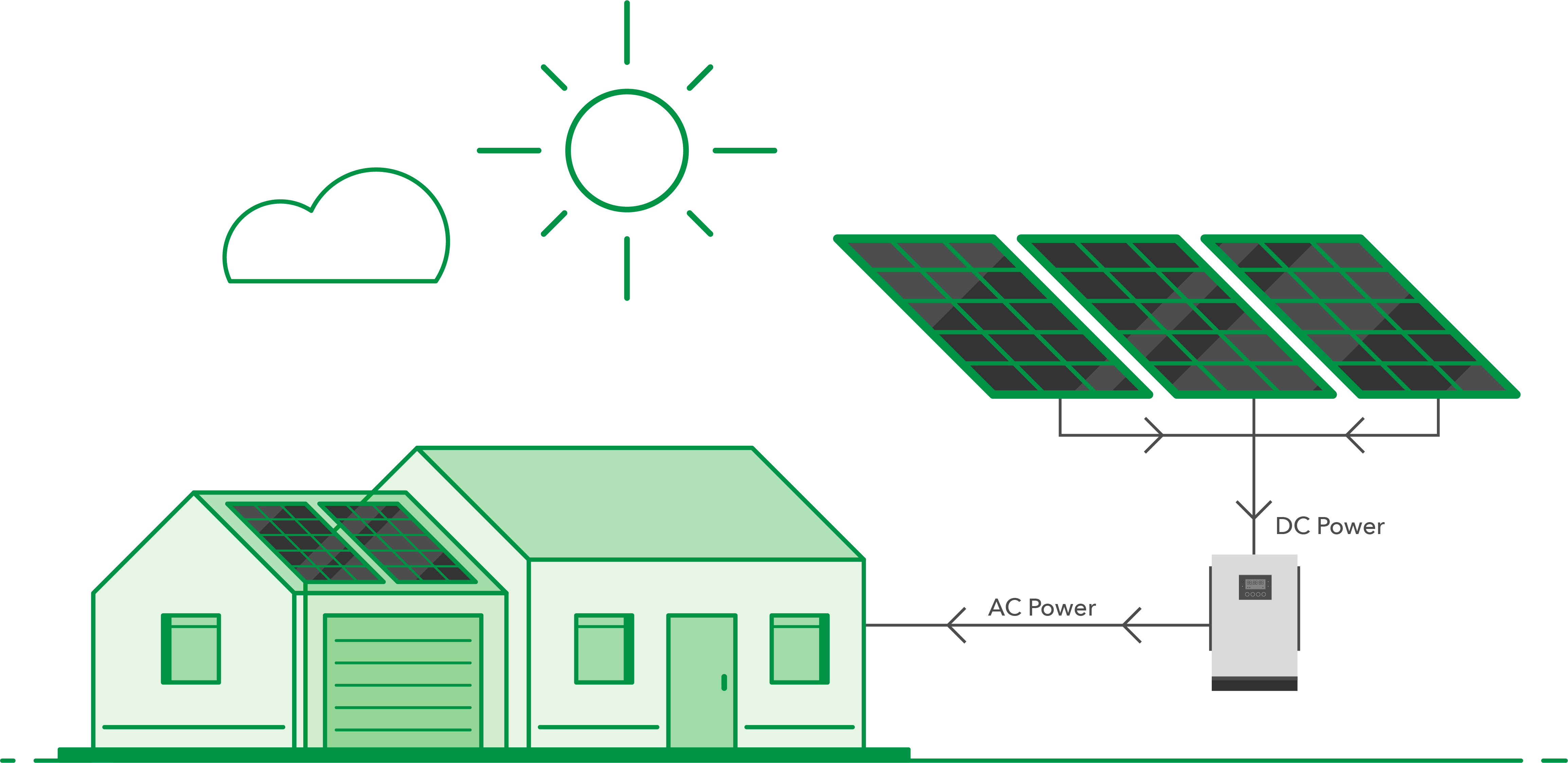
Microinverters
Unlike the central design of a string inverter, microinverters are distributed inverters. Solar panel systems with microinverters normally have a small inverter mounted behind each individual solar panel in a system. This allows each of your solar panels to produce power independently and, by doing so, the reduced production of one panel does not affect the output of an entire system. For this reason, microinverters are Solar Wave's technology of choice for residential projects.
- Pros: Independently, inverting the electricity of each panel increases the performance of your system. A drop in performance in one panel does not affect the performance of another panel. This also allows for panel-level monitoring so issues with an individual panel’s performance are easily identified. You also eliminate a central point of failure with your system. Multiple microinverters can go down and the rest of your system will continue to produce power.
- Cons: Microinverters cost more than string inverters, and access to service is more difficult because of their location behind your panels.
- Best Applications: Systems that have multiple arrays facing different directions, or that experience shade from obstructions such as trees or nearby buildings. For owners that want to maximize their system’s performance.
Power Optimizers
You can think of power optimizers as a compromise between string inverters and microinverters. A power optimizer system will have a central inverter, just like a string inverter, but will have added power optimizers installed with each solar panel. The power optimizers do not invert electricity, but rather isolate and condition the DC electricity. They do this by fixing the voltage of the electricity which is then sent down to the central inverter, normally mounted to an exterior or interior wall of your home or building.
Pros: A power optimizer system is more efficient than a string inverter alone, and tends to cost less than a microinverter system. By optimizing each panel, a drop in performance of one panel will not affect the performance of another panel and you can monitor the individual performance of each panel.
Cons: Power optimizers are an added expense from a standard string inverter, and like microinverters, access to service is more difficult because of their location behind your panels.
Best Applications: Owners that would like a step up in performance and monitoring from a string inverter but don’t want to invest in microinverters.
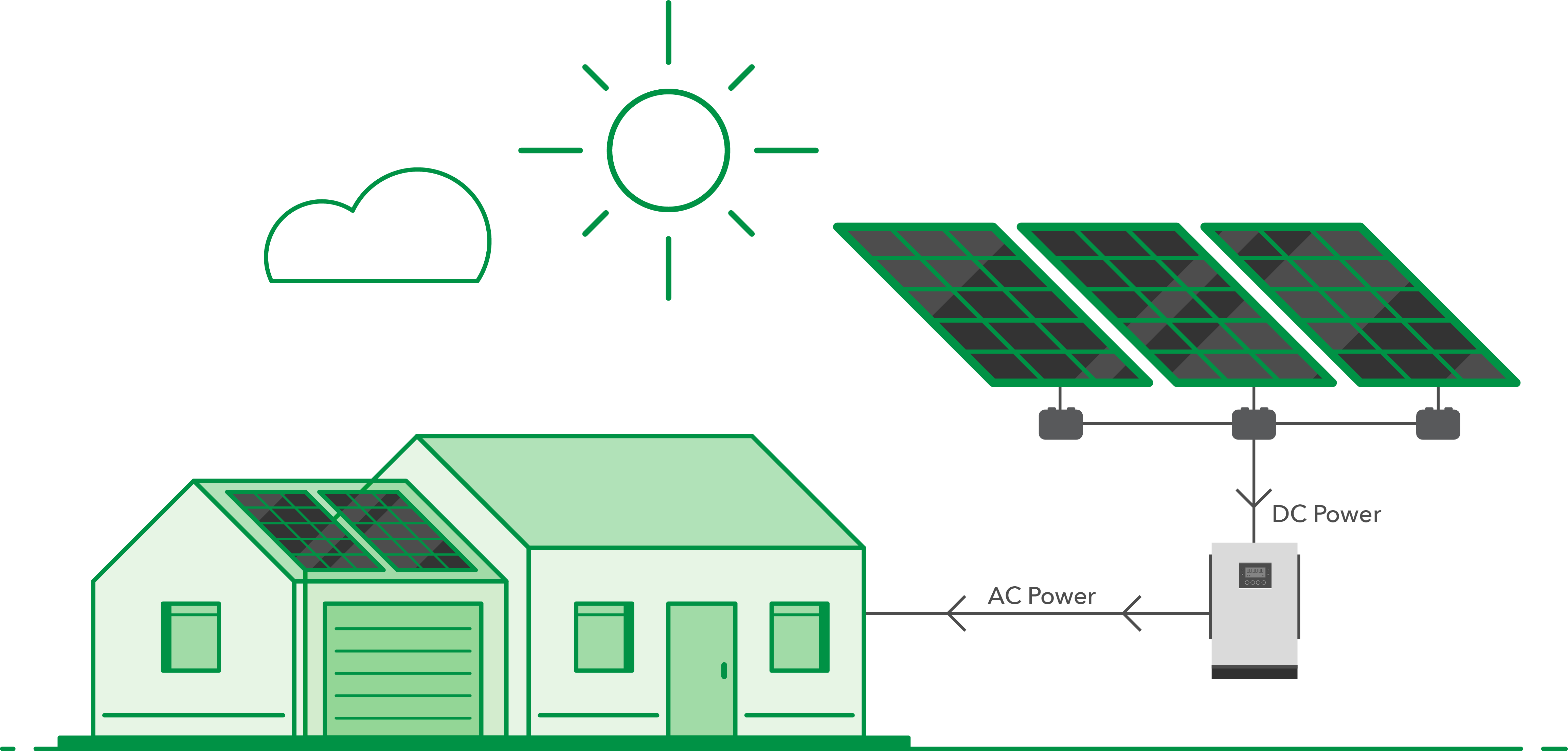
Choosing the best solar inverter for you
Now that you understand how solar inverters work, you may find it easier to select the best option for your application. Ultimately, there is no right or wrong choice. It simply comes down to what inverter works best for your installation. Here at Solar Wave, we can help you make the right choice when deciding which inverter is best for you. Generally, we install far more microinverters than anything else on residential projects, and we normally install string inverters for large commercial projects.
Solar Monitoring Systems
A solar monitoring system allows you to view real-time and historical energy production data from your system. It is very important that your system includes a monitoring system to ensure that your system is producing energy normally. All Solar Wave systems come with monitoring as a standard feature which includes both desktop and mobile app access so you can view your system’s performance from virtually anywhere at any time.
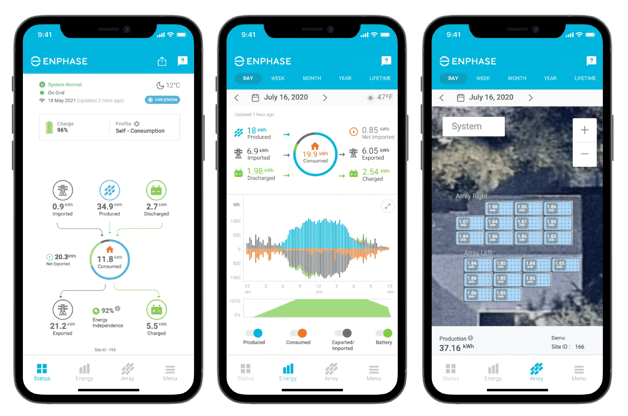
Solar Mounting Racking Systems
A racking system is a structure to which your solar panels will be mounted. There are many types of mounting systems such as roof mount, ground mount, or ballast mount systems. The most commonly used are the roof mount and ground mount options.
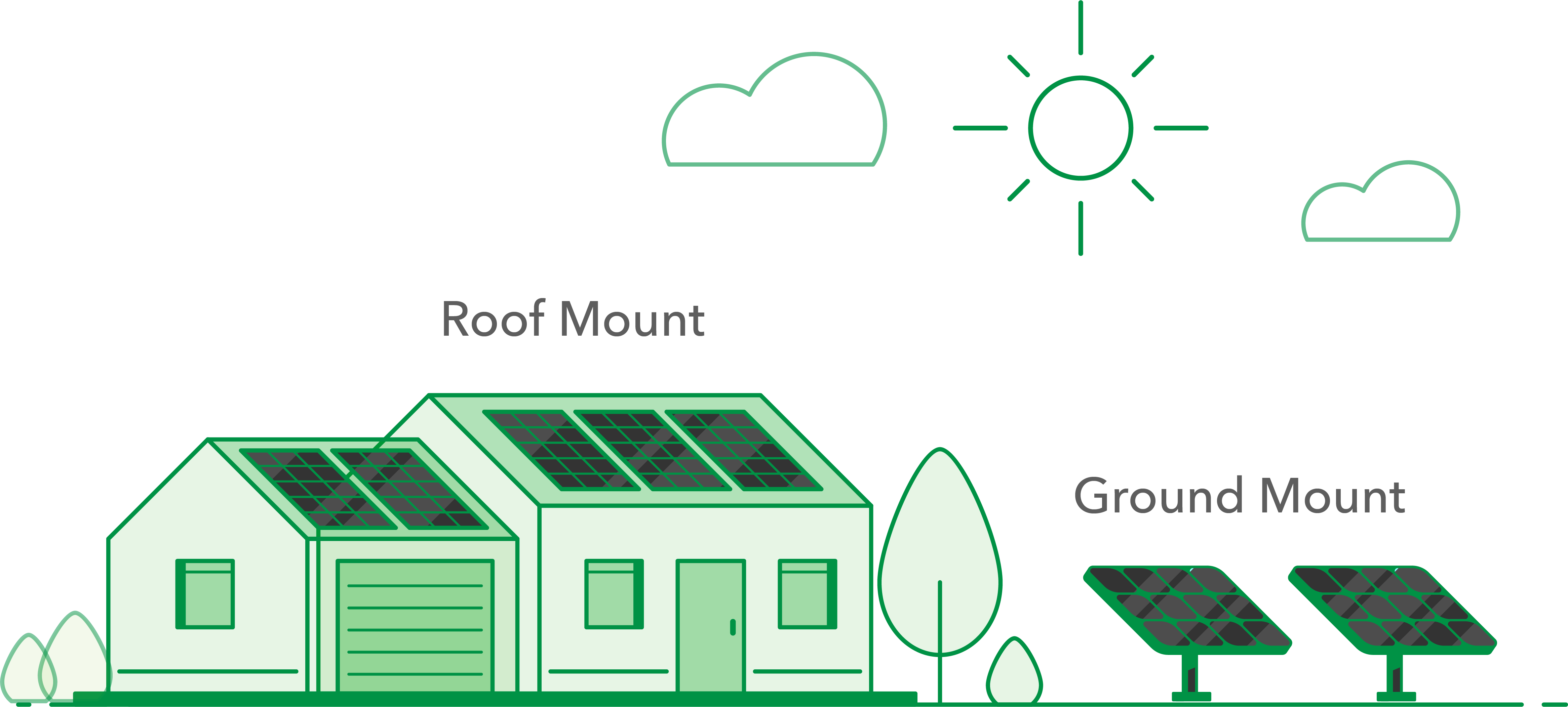
Solar Financing Options
Solar Wave offers a wide variety of financing options for both residential and commercial solar systems. Probably the most straightforward and to no surprise, a homeowner or building owner can pay cash for a solar panel system. For those that do not want to pay cash for their systems, we have some really great financing options available. We have terms ranging from 5 years up to 30 years which really allow you the flexibility of a payment that works for your budget. In most cases, a homeowner can end up with a monthly payment less than their current electricity bill. It is however important to note that a lot of the solar financing options available have financing fees so you will want to work with a company like Solar Wave that will educate you on the solar financing options available to you. For more about our financing offers and transparent business model visit our pricing page here.
The Solar Installation Process
The actual installation of a solar panel system typically takes only a day or two. However, a lot more than just the installation goes into the project. It all starts with a free design and consultation from a Solar Wave expert. Once a system is designed, financing is determined and an install agreement is signed. From there, our engineering team takes over. While your engineering is being completed, we will work with your utility company on your net metering application and your county on your permit if needed. Once net metering and your permit are approved, we prepare your materials and schedule your installation. After installation, there will be various inspections which can take a couple of weeks. After passing these inspections, your system can be turned on and you can enjoy all the benefits of your new solar panel system. It may seem like a lot but when you go solar with Solar Wave, we take care of it all and focus on making the process as enjoyable as possible for you.



